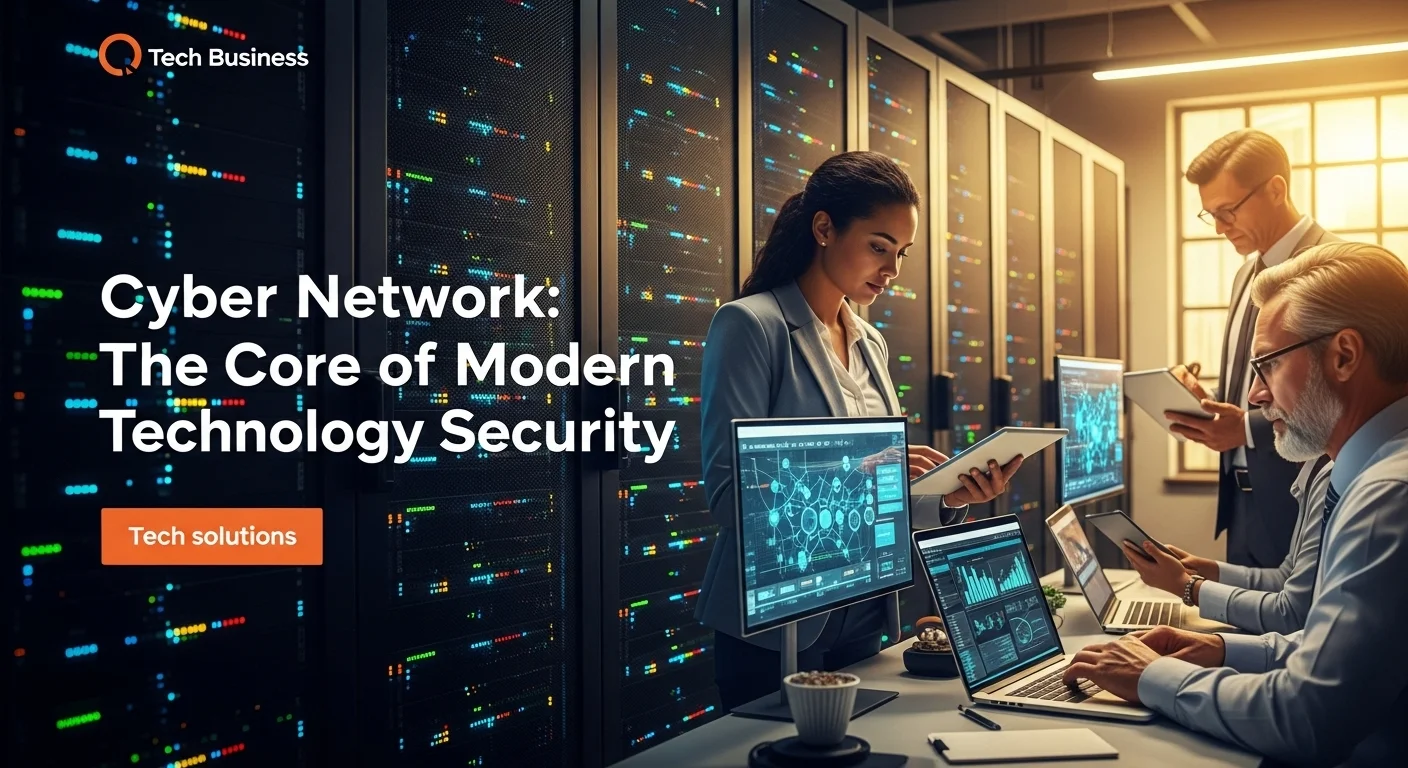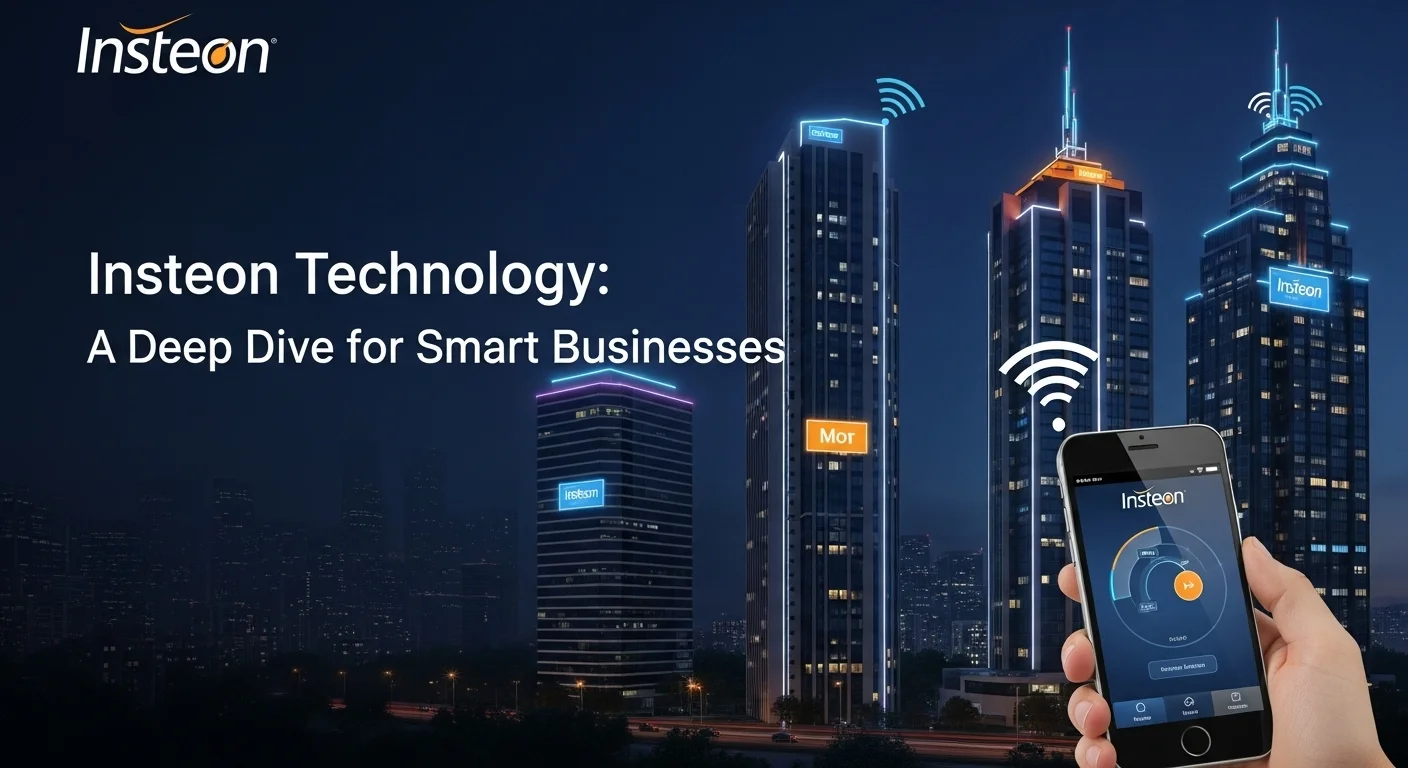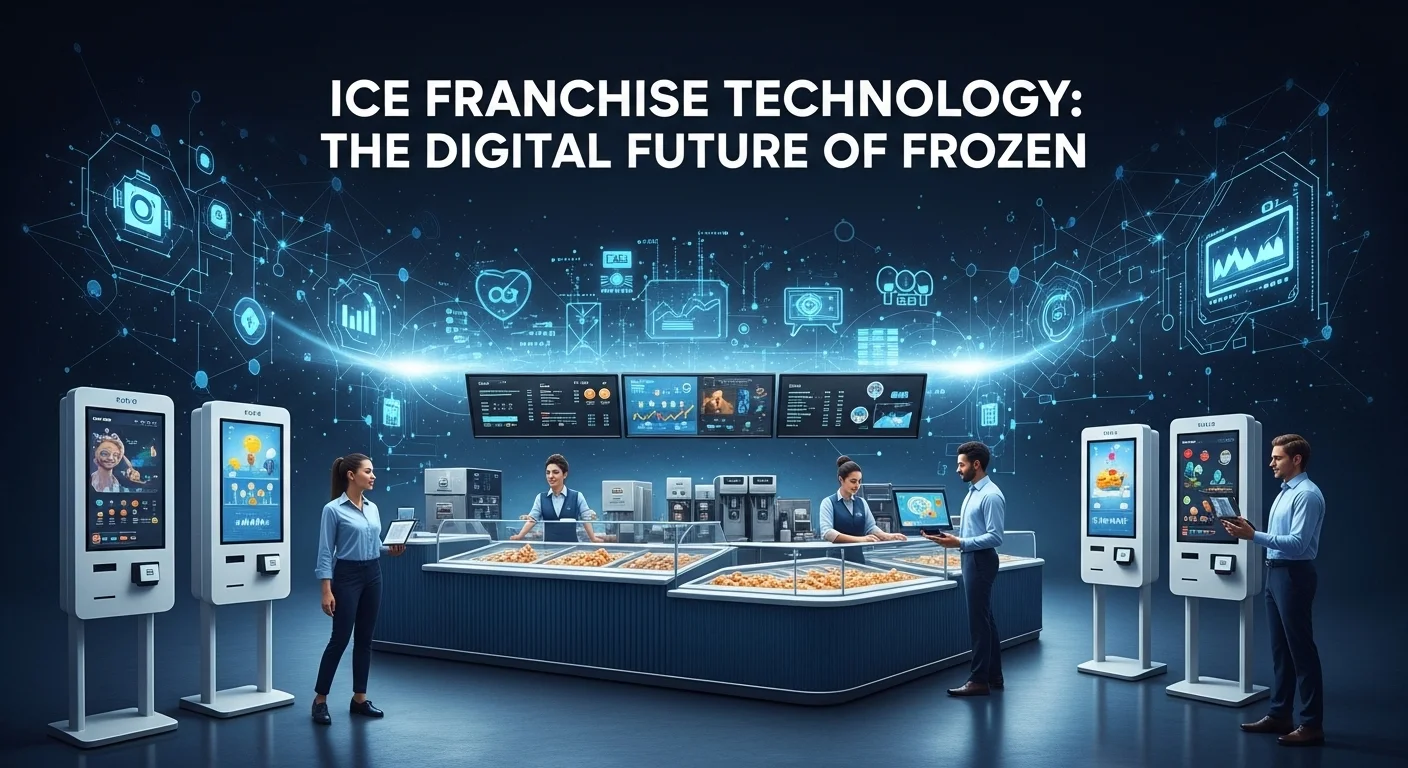Automation Price in Technology: A Comprehensive Guide
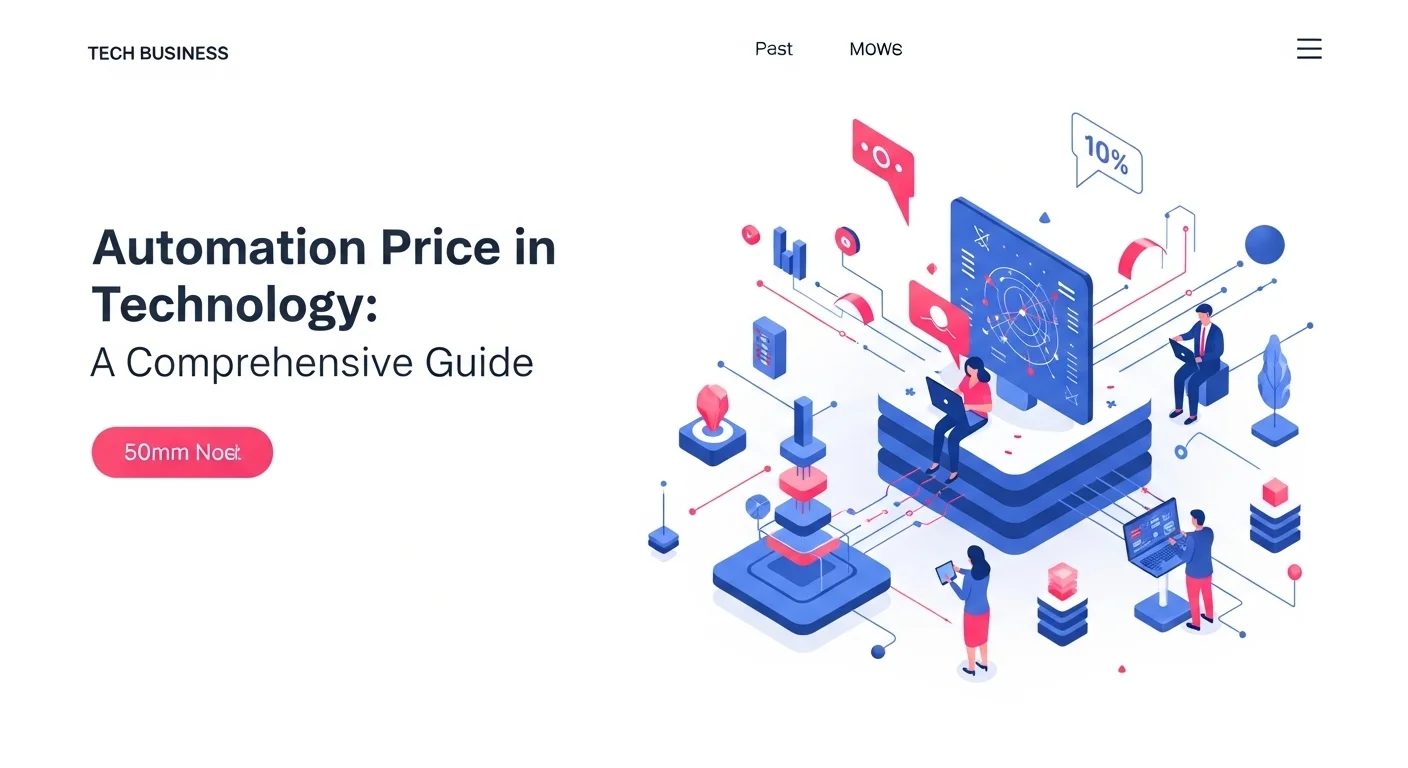
Executive Summary
The concept of 'Automation Price' extends far beyond a simple transaction. It represents the total investment in technology designed to enhance efficiency, productivity, and convenience. For businesses, this includes the cost of Robotic Process Automation (RPA), industrial machinery, and AI-driven software, where the ultimate goal is a significant return on investment (ROI) through optimized operations and reduced errors. For homeowners, it encompasses the growing market of smart home devices and integrated systems, from DIY solutions to high-end, professionally installed networks. This article delves into the multifaceted nature of automation pricing, breaking down the costs associated with hardware, software, and installation. It provides a detailed analysis of pricing for leading home automation brands like Crestron, KNX, and Legrand, and explores the financial considerations for business automation. By understanding the complete financial picture—from initial outlay to long-term value—both corporations and consumers can make informed, strategic decisions about integrating automation technology into their daily operations and lives, ensuring the price paid translates into tangible, lasting benefits.
Table of Contents
What is Automation Price and why is it important in Technology?
In the modern technological landscape, the term 'Automation Price' has evolved from a simple line item on an invoice to a complex, strategic calculation that underpins major decisions for both global enterprises and individual homeowners. It is no longer just about the cost of a single robot or a smart light bulb; it is about the Total Cost of Ownership (TCO) and, more importantly, the Return on Investment (ROI) that this technology delivers. Understanding the multifaceted nature of automation pricing is fundamental for anyone looking to leverage technology to create efficiencies, enhance security, or simply improve their quality of life. The price of automation is a critical metric because it directly influences budget allocation, project feasibility, and the perceived value of technological adoption. For a business, miscalculating the automation price can lead to budget overruns and failed initiatives. For a homeowner, a misunderstanding of the costs can result in a system that is either inadequate for their needs or excessively expensive. Therefore, a granular understanding of what constitutes the full price of automation is not just important—it is essential for success in a world increasingly driven by automated solutions.
The Core Components of Automation Price
To truly grasp the concept, one must break down the automation price into its core components. These elements collectively form the TCO and provide a holistic view of the investment required.
1. Hardware Costs: This is often the most tangible and straightforward component. It includes the physical devices that form the backbone of any automation system. In an industrial setting, this could be robotic arms, Programmable Logic Controllers (PLCs), sensors, and conveyor systems. In a business office, it might be the servers required to run automation software. In a residential context, hardware includes smart speakers, thermostats, automated blinds, security cameras, and central control hubs. The cost can range from a few dollars for a simple sensor to hundreds of thousands for sophisticated industrial robots.
2. Software and Licensing Costs: Automation is powered by intelligent software. This component of the price can be structured in several ways. Some software is sold with a one-time perpetual license. More commonly, especially in the age of cloud computing and AI, software is offered on a subscription basis (Software as a Service, or SaaS). This model, prevalent in Robotic Process Automation (RPA) platforms like UiPath and Automation Anywhere, involves recurring annual or monthly fees. [29] These fees often scale based on the number of automated processes (bots) or users. [3, 20] For home systems, some platforms may require subscription fees for premium features like cloud storage for security cameras or advanced scene programming.
3. Installation and Integration Costs: This is a critical, and often underestimated, component of the total price. A box of smart devices is useless without proper installation and integration. The home automation installation price can vary dramatically. [2] A simple DIY setup with a few smart plugs might have a negligible installation cost beyond the user's own time. However, for complex, hardwired systems, professional installation is a necessity. Labor costs for electricians and certified technicians can range from $80 to over $200 per hour, depending on the complexity and location. [12, 17] In a business context, integration costs can be even higher, involving teams of developers and engineers to ensure the new automation system communicates seamlessly with existing enterprise software like ERP and CRM systems. This phase is crucial for avoiding data silos and ensuring a smooth workflow.
4. Development and Customization Costs: Off-the-shelf automation solutions rarely fit every need perfectly. Customization is often required. This could involve programming a robot for a specific manufacturing task, configuring an RPA bot to navigate a unique software application, or designing a custom user interface for a luxury smart home. These development costs are driven by the hours of specialized labor from programmers, user experience (UX) designers, and automation engineers. For high-end residential systems, this customization is a primary driver of the overall cost.
5. Maintenance and Support Costs: Automation systems are not 'set and forget' technologies. They require ongoing maintenance to ensure they operate reliably and securely. This includes software updates, security patches, hardware repairs, and technical support. Many enterprise automation vendors offer tiered support packages at an additional annual cost. For homeowners, while formal support contracts are less common, maintenance can involve replacing batteries in sensors, troubleshooting network issues, or paying a technician to fix a malfunctioning component. These ongoing expenses are a vital part of the long-term automation price.
The Importance of Automation in Modern Technology and Business
The reason the concept of automation price is so heavily scrutinized is that the benefits of automation are transformative. In business, automation drives a powerful competitive advantage. It leads to increased productivity by allowing tasks to be completed 24/7 without fatigue. It enhances quality and reduces errors by removing the element of human inconsistency from repetitive processes. It improves data accuracy, leading to better business intelligence and decision-making. Furthermore, by automating mundane, rules-based tasks, companies can free up their human workforce to focus on more creative, strategic, and value-added activities, which can boost employee morale and innovation. [3] The ROI of business automation is measured in cost savings from reduced labor, increased output, and fewer costly mistakes. [9, 23]
In the home, automation brings a different but equally valuable set of benefits. It offers unparalleled convenience, allowing homeowners to control lighting, climate, entertainment, and security with a simple voice command or a tap on their smartphone. It can lead to significant energy savings through smart thermostats that optimize heating and cooling and automated blinds that manage solar gain. It enhances security with integrated cameras, smart locks, and sensors that can provide peace of mind whether the resident is at home or away. The 'price' of this convenience and security is weighed against the tangible benefits of a more comfortable, efficient, and safer living environment. [16]
Deep Dive into Home Automation Pricing Structures
The residential market is a perfect microcosm for understanding the diverse pricing structures in automation. The home automation system price is not a single figure but a spectrum, heavily influenced by the brand, complexity, and installation method. [10, 16] Let's explore some of the key players mentioned in the prompt.
A crucial factor across all systems is the home automation installation price. For wireless, DIY-friendly systems, this cost can be minimal. [10] However, for robust, reliable, and integrated systems, professional installation is key. This can involve running new wires, installing in-wall controllers, and programming a central hub, with labor costs often billed hourly. [2, 18]
The crestron home automation price sits firmly at the premium, high-end of the market. Crestron is not a DIY product; it is a bespoke solution sold and installed exclusively by certified dealers. [8] The system is known for its incredible power, flexibility, and reliability, capable of integrating virtually any electronic device in a home into a single, cohesive ecosystem. A Crestron project often involves extensive consultation, custom programming, and professional installation. As a result, the price is substantial, with entry-level systems starting around $15,000 to $25,000 and comprehensive, large-scale projects easily exceeding $100,000 or even $200,000. [24, 43] The price reflects a turnkey, white-glove service and a system tailored precisely to the homeowner's lifestyle.
The knx home automation price represents a different approach. KNX is not a brand but an open, international standard for building automation. [26, 49] This means that over 500 different manufacturers produce KNX-certified devices that are all interoperable. This offers immense flexibility and future-proofing, as homeowners are not locked into a single proprietary ecosystem. The price of a KNX system is determined by the specific components chosen from various manufacturers and the cost of the certified KNX integrator who designs and programs the system. A basic KNX installation for a small apartment might start around $10,000, while larger homes with extensive features can range from $40,000 to over $100,000. [7] The key cost factor is the professional expertise required to design and commission a robust KNX network.
Finally, the legrand home automation price offers a more scalable and accessible entry point into professionally supported automation. Legrand, a global specialist in electrical and digital building infrastructures, offers several smart home lines, including the Arteor and Valena ranges with Netatmo. This allows for a tiered pricing structure. Homeowners can start with individual 'with Netatmo' smart switches and outlets, which can be installed by an electrician without the need for a complex central hub, keeping initial costs down. They can then scale up to a more integrated system like MyHOME_Up, which provides a more comprehensive, professionally installed solution. This scalability makes the Legrand ecosystem adaptable to a wider range of budgets, offering a middle ground between pure DIY solutions and the high-end cost of systems like Crestron. The price is highly dependent on the scope, but it provides a pathway for homeowners to grow their smart home over time, managing the overall automation price in stages.
In conclusion, the 'Automation Price' is a critical concept in technology, representing a comprehensive investment in future efficiency and capability. Whether for a multinational corporation analyzing the TCO of an RPA deployment or a family budgeting for their first smart home, understanding the interplay of hardware, software, installation, and maintenance costs is the first and most crucial step toward making a sound technological investment.

Complete guide to Automation Price in Technology and Business Solutions
Navigating the financial landscape of automation requires a detailed and strategic approach. The 'Automation Price' is not a monolithic figure but a dynamic calculation that varies wildly across different technologies, applications, and scales of deployment. For business leaders and technology enthusiasts alike, a complete guide to automation pricing is essential for making informed decisions, justifying investments, and ultimately achieving a positive return. This guide will dissect the pricing models of key automation technologies in the business world and provide a deeper comparative analysis of home automation solutions, ensuring a thorough understanding of the costs involved. We will move beyond surface-level estimates to explore the underlying factors that drive the total cost of ownership, including the often-overlooked expenses that can impact a project's budget and success. By examining business solutions like RPA and industrial automation alongside residential systems, we can build a holistic picture of the economic realities of an automated future.
Business Automation: Unpacking the Price of Efficiency
In the corporate sphere, automation is a strategic imperative. The price of implementing these solutions is a direct investment in operational excellence, competitive advantage, and future growth. The pricing models are as varied as the technologies themselves.
Robotic Process Automation (RPA) & Business Process Automation (BPA) Pricing
RPA and BPA are transformative technologies that use software 'bots' to automate repetitive, rules-based digital tasks, such as data entry, invoice processing, and report generation. The pricing for these platforms is typically multifaceted. [3, 20]
1. Licensing Models: Vendors like UiPath, Automation Anywhere, and Microsoft Power Automate offer various licensing structures. [29, 36] A common model is 'per-bot' pricing, where a company pays an annual fee for each software robot it deploys. [20] This can range from a few thousand dollars for a simple 'attended' bot (which works alongside a human) to over $10,000 annually for an 'unattended' bot (which runs complex processes autonomously in the background). [29] Other models include subscription-based pricing for the entire platform or consumption-based pricing, where costs are tied to the volume of transactions or hours the bots are active. [4]
2. Implementation & Development Costs: The license is just the beginning. The cost to develop, test, and deploy these bots can be substantial. This often requires hiring specialized RPA developers or engaging consulting firms, with hourly rates ranging from $150 to over $500. [27] A simple automation might take 40-80 hours to develop, while a complex one could take hundreds of hours.
3. Infrastructure and Maintenance: RPA bots need a digital environment to run in, which may require investment in servers (on-premise or cloud). Furthermore, ongoing maintenance is crucial. When underlying applications (like a website or a desktop program) are updated, the bots that interact with them often need to be reconfigured, incurring additional costs. According to some studies, licensing only accounts for 25-30% of the total cost of RPA, with the rest being a combination of development, implementation, and maintenance. [6]
The total automation price for an RPA initiative can range from $10,000-$15,000 for a small pilot project to millions of dollars for a large-scale enterprise deployment with hundreds of bots. [3, 27] The key to justification is a rigorous ROI analysis, comparing this investment against labor cost savings, error reduction, and increased processing speed. [3]
Industrial Automation & IIoT Pricing
Industrial automation involves the use of physical machinery—robots, control systems (PLCs, SCADA), and sensors—to automate manufacturing and production processes. The pricing here is heavily weighted towards capital expenditure (CapEx).
1. Hardware Costs: An industrial robot arm can cost anywhere from $25,000 to $400,000, depending on its size, payload, and capabilities. However, the cost of the robot itself is often only about a third of the total system cost. [9] The other two-thirds are comprised of integration, safety systems (like cages and sensors), end-of-arm tooling (grippers, welders), and programming.
2. Integration and Engineering: Integrating a robotic cell into a production line is a complex engineering task. It involves mechanical and electrical design, custom programming, and ensuring the new system works safely and efficiently with existing machinery. This requires highly skilled automation engineers and can be a significant cost driver.
3. The IIoT (Industrial Internet of Things) Factor: IIoT adds another layer of technology and cost. It involves embedding sensors in machinery to collect vast amounts of data. This data is then transmitted to a cloud platform for analysis, enabling capabilities like predictive maintenance. The pricing model here shifts partially to operational expenditure (OpEx), with recurring fees for cloud storage, data processing, and analytics software subscriptions.
The ROI in industrial automation is calculated based on increased throughput, improved product quality, reduced waste, and enhanced worker safety. A typical project might aim for an ROI within 12 to 36 months. [28]
A Comparative Guide to Home Automation System Prices
For homeowners, the decision-making process mirrors that of a business, albeit on a different scale. The goal is to maximize value—whether that's convenience, security, or energy efficiency—within a specific budget. A key variable in the total home automation system price is the cost of professional installation. The home automation installation price can range from a few hundred dollars for a simple setup to tens of thousands for a large, complex, and fully wired project. [10, 11] Let's compare the prominent systems.
High-End Tier: Crestron and Control4
The crestron home automation price places it at the apex of the residential market. As previously noted, Crestron is a fully customized, professionally installed system. A typical project starts in the tens of thousands and can easily soar into six figures. [8, 24] What justifies this price? Unmatched power and reliability. Crestron can integrate disparate systems (lighting, HVAC, security, multi-room audio/video, pools, irrigation) into a single, seamless interface that is custom-programmed for the user. The price includes consultation, system design, hardware, extensive programming labor, and white-glove installation and support. It is an investment in a lifestyle and the ultimate in home control, suitable for luxury residences where budget is a secondary concern to performance and customization.
The Flexible Standard: KNX
The knx home automation price is built on the principle of flexibility and interoperability. [7] As an open standard, KNX allows homeowners to mix and match components from hundreds of manufacturers, avoiding vendor lock-in. [26, 49] This is a significant advantage for future-proofing a home. The cost structure is component-based: you pay for each individual actuator, sensor, and controller, plus the critical labor of a certified KNX integrator. A basic system might cost between €50-€75 per square meter, while a more luxurious and comprehensive installation could be over €150 per square meter. [47] For a 200 sq m (approx. 2150 sq ft) home, this translates to a range of €10,000 to over €30,000, excluding the final fixtures. [47] The investment in KNX is an investment in a robust, decentralized, and highly reliable wired backbone that is built to last for decades.
The Scalable Ecosystem: Legrand
The legrand home automation price offers a more accessible and scalable pathway. Legrand's strategy, particularly with its Netatmo-integrated lines, allows for a gradual adoption of smart home technology. A homeowner can begin by replacing a few key light switches or power outlets with their smart counterparts. This 'à la carte' approach keeps the initial investment low. For example, a single smart switch might be installed by an electrician for a relatively modest cost. As needs and budget grow, more devices can be added, eventually building towards a more comprehensive system like Legrand's MyHOME_Up, which requires professional planning and installation for a fully integrated experience. This model bridges the gap between simple DIY products and the high cost of all-in systems. It provides a structured, professional-grade alternative that can be tailored to a wider range of budgets, making the overall automation price more manageable by spreading it out over time.
DIY and Consumer-Grade Systems
For context, it's important to mention the vast market of DIY systems built around hubs like Amazon Alexa, Google Home, or Apple HomeKit. [10] Here, the initial hardware costs are much lower. A smart speaker might be under $100, smart bulbs $15-$50 each, and a smart thermostat $150-$250. [18, 32] A homeowner could build a reasonably functional system for under $2,000. The primary 'cost' here is the user's own time for setup, troubleshooting, and managing multiple apps and potential interoperability issues. While incredibly popular and accessible, these systems generally lack the reliability, deep integration, and unified control of professionally installed wired systems like KNX or Crestron. The home automation installation price is effectively zero in monetary terms, but the 'sweat equity' can be considerable.
In conclusion, the 'Automation Price' is a complex equation with numerous variables. For businesses, it's a strategic calculation where upfront investment in RPA or industrial machinery is weighed against long-term gains in efficiency and productivity. For homeowners, the choice ranges from accessible DIY solutions to scalable ecosystems like Legrand, flexible standards like KNX, and the ultimate in luxury control with Crestron. In every scenario, the key is to look beyond the initial hardware cost and consider the complete picture: software, installation, maintenance, and the ultimate value the technology brings. A thorough understanding of this complete guide to pricing is the foundation for a successful automation journey.
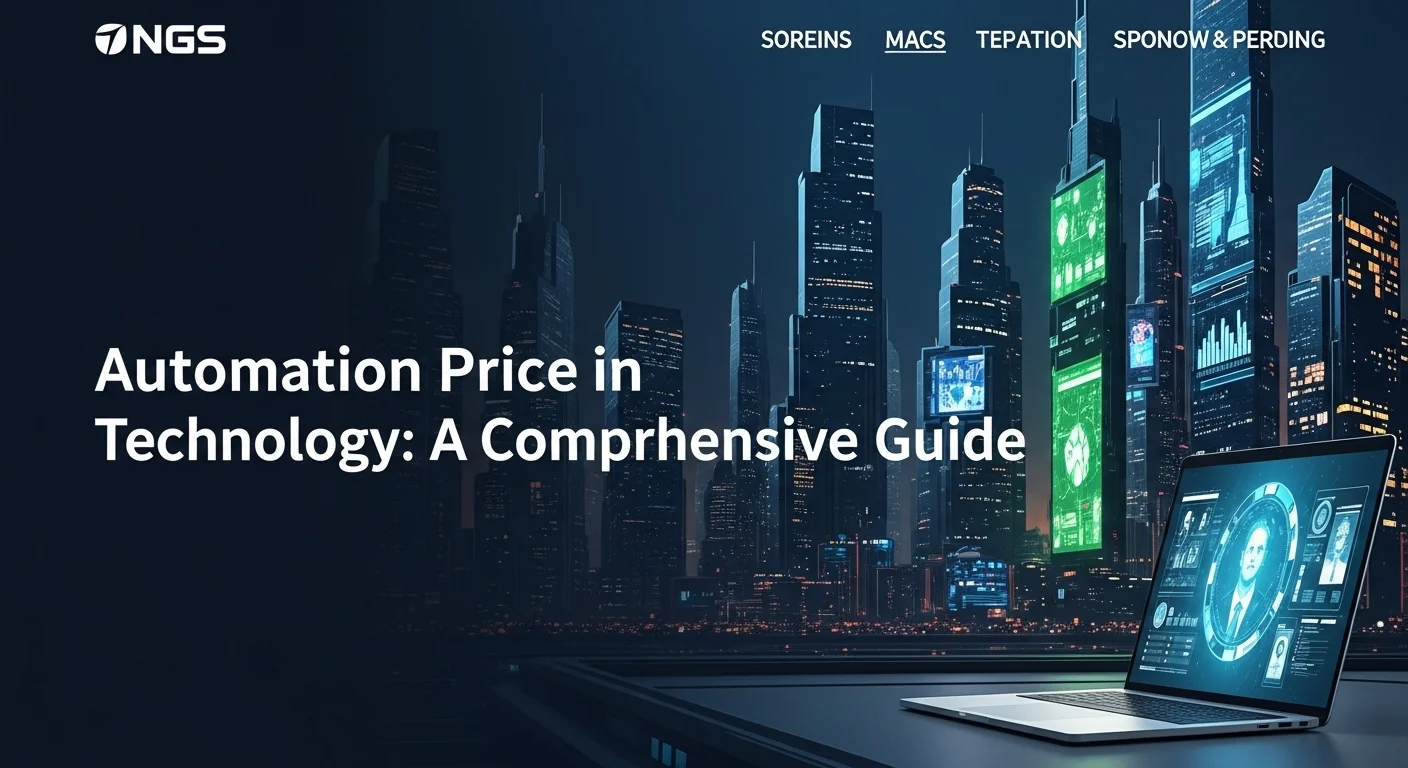
Tips and strategies for Automation Price to improve your Technology experience
Maximizing the value of an automation investment is the ultimate goal for any organization or individual venturing into this technological domain. The 'Automation Price' is not merely an expense to be minimized, but a strategic investment to be optimized. This requires more than just choosing the cheapest hardware; it involves intelligent planning, a clear understanding of objectives, and a focus on long-term benefits over short-term costs. The right strategies can significantly improve the technology experience, ensuring that the chosen automation solution delivers on its promise of efficiency, convenience, and a strong return on investment. Whether you are a CIO planning a multi-million dollar digital transformation or a homeowner looking to make your living space smarter, the following tips and strategies will help you navigate the complexities of automation pricing and achieve the best possible outcomes. This section will provide actionable advice for both business and residential contexts, highlighting best practices, useful tools, and the importance of a forward-thinking mindset.
Strategies for Businesses to Optimize Automation Price
For businesses, optimizing the automation price is a critical exercise in financial and strategic planning. The goal is to achieve the desired operational improvements without over-investing or choosing a solution that fails to scale. [4]
1. Start with a Pilot Project: Before committing to a large-scale, enterprise-wide automation rollout, it's wise to start with a small, well-defined pilot project. Choose a process that is relatively simple but offers a clear potential for improvement. This allows the organization to test the technology, understand the real-world implementation challenges, and measure the ROI on a smaller scale. A successful pilot provides a powerful business case for further investment and helps the team build valuable experience. For RPA, this could be automating a single, high-volume report generation task. [3]
2. Calculate the Total Cost of Ownership (TCO): A common mistake is to focus solely on the initial licensing or hardware cost. [4] A comprehensive TCO calculation is essential. This must include not only the upfront price but also the costs of implementation, integration with existing systems, employee training, and ongoing maintenance and support contracts. [22] For example, the automation price of an industrial robot isn't just the robot's sticker price; it includes the safety cage, end-effector, programming, and annual maintenance. [9] A clear TCO picture prevents unexpected budget overruns down the line.
3. Prioritize Processes with High ROI Potential: Not all processes are created equal. The best candidates for automation are tasks that are highly repetitive, rules-based, high-volume, and prone to human error. Think invoice processing, data migration, or quality control checks on an assembly line. Automating these processes will yield the fastest and most significant returns. Use process mining tools to objectively identify bottlenecks and inefficiencies in your current workflows to find the best opportunities.
4. Leverage Cloud and Open-Source Technologies: To reduce large upfront capital expenditures, businesses can leverage cloud-based automation platforms (SaaS). This shifts the cost from CapEx to a more predictable operating expense (OpEx). [36] Similarly, exploring open-source automation tools like Ansible for IT automation or certain Python libraries for data processing can significantly reduce software licensing costs. The investment here shifts from licensing fees to hiring or training personnel with the requisite technical expertise.
5. Don't Skimp on Training: The most advanced automation technology is ineffective if employees don't know how to use it or are resistant to its adoption. Investing in comprehensive training is crucial. This ensures that the workforce can effectively manage, interact with, and troubleshoot the new automated systems. It also helps to manage the cultural shift, framing automation as a tool that empowers employees rather than replaces them, which is vital for long-term success.
Tips for Homeowners to Enhance Their Automation Experience
For homeowners, the goal is to create a smart, convenient, and efficient living environment that fits their lifestyle and budget. The strategies here are focused on making smart choices that provide lasting value.
1. Define Your 'Why' Before Your 'What': Before you even look at a single product, define what you want to achieve. Is your primary goal energy savings? Enhanced security? Convenience? Entertainment? Your answer will guide your entire project. If energy savings is the goal, a smart thermostat and automated blinds are top priorities. If it's security, smart locks and cameras come first. A clear 'why' prevents you from buying gadgets you don't need and helps you budget effectively for the home automation system price.
2. DIY vs. Professional: An Honest Assessment: Be realistic about your technical skills and the amount of time you're willing to invest. While DIY setups can save money on labor, a poorly configured system can be a constant source of frustration. [12] For complex tasks, especially those involving mains electrical wiring, hiring a professional is safer and often more cost-effective in the long run. The home automation installation price is an investment in reliability and peace of mind. [2] This is especially true for integrated systems where multiple components need to work together flawlessly.
3. Prioritize Future-Proofing and Interoperability: Technology evolves rapidly. To avoid having a system that's obsolete in five years, prioritize systems built on open standards or with broad interoperability. This is a key advantage of the knx home automation price; its foundation as an international standard ensures long-term compatibility with devices from hundreds of manufacturers. [49] For wireless systems, look for support for cross-platform standards like Matter, which aims to unify the smart home ecosystem. This strategy protects your investment and gives you more choices in the future.
4. Get Multiple Quotes for High-End Systems: When considering a premium solution like a Crestron or a large-scale KNX installation, it is imperative to consult with multiple certified installers. The crestron home automation price can vary between dealers based on their experience, overhead, and the specific equipment they recommend. [24] Provide each integrator with the same detailed brief of your requirements. This allows you to compare not just the final price, but also their proposed approach, the quality of the components, and the level of post-installation support they offer.
5. Explore Scalable Systems for Budget Flexibility: If a full-blown, high-end system is not immediately feasible, consider a scalable ecosystem. The legrand home automation price structure is a prime example of this approach. You can start with a foundational system controlling key functions like lighting and expand it over time to include blinds, heating, and more as your budget allows. This phased approach makes the overall automation price more manageable and allows you to learn and adapt your system as your needs change.
The Impact of AI and External Resources
Artificial Intelligence (AI) is increasingly being integrated into automation, making systems smarter and more adaptive. In business, AI-powered process discovery tools can automatically identify the best processes to automate. In the home, AI helps voice assistants understand natural language better and enables smart thermostats to learn your routines. While AI capabilities can sometimes add to the initial price, they often dramatically increase the ROI by making the automation more effective and efficient.
To stay informed, it is crucial to consult quality external resources. For instance, a deep dive into automation trends from a reputable source like Gartner or a detailed technical article on a platform like TechCrunch can provide invaluable insights that help in making better purchasing decisions. These resources offer expert analysis, market comparisons, and reviews that go beyond vendor marketing materials.
In conclusion, optimizing the automation price is a strategic endeavor. For businesses, it means a disciplined approach focused on TCO and ROI. For homeowners, it's about making informed choices that align with their lifestyle, budget, and future needs. By applying these tips and strategies, you can ensure that your investment in automation technology is not just a cost, but a gateway to a more efficient, intelligent, and enhanced technological experience.
Expert Reviews & Testimonials
Sarah Johnson, Business Owner ⭐⭐⭐
The information about Automation Price is correct but I think they could add more practical examples for business owners like us.
Mike Chen, IT Consultant ⭐⭐⭐⭐
Useful article about Automation Price. It helped me better understand the topic, although some concepts could be explained more simply.
Emma Davis, Tech Expert ⭐⭐⭐⭐⭐
Excellent article! Very comprehensive on Automation Price. It helped me a lot for my specialization and I understood everything perfectly.

